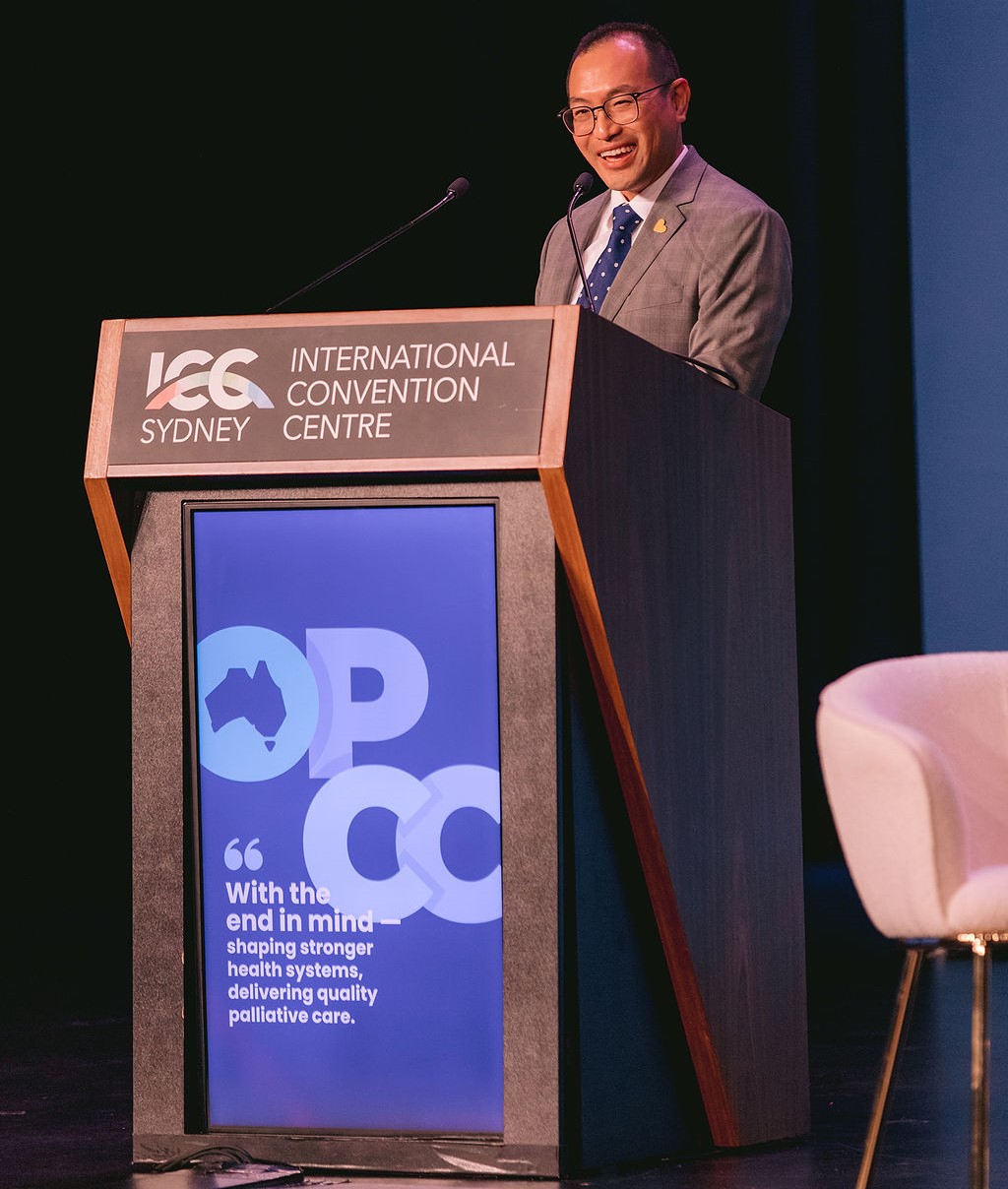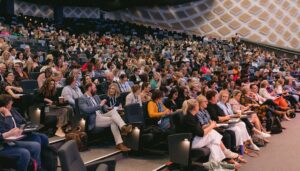Kelly Clark and Prof Hsien Seow: The importance of providing culturally safe palliative care for Aboriginal and Torres Strait Islander peoples
Kelly Clark and Prof Hsien Seow: The importance of providing culturally safe palliative care for Aboriginal and Torres Strait Islander peoples
by Megan Blandford
Friday, February 02, 2024
At the 2023 Oceanic Palliative Care Conference, Northern Territory Aboriginal health leader Kelly Clark (nee Anderson) and Canadian researcher Prof Hsien Seow shared the important elements of providing culturally safe, co-designed palliative care for First Nations people including Aboriginal and Torres Strait Islander peoples.
Cultural safety puts an individual’s wishes and choices at the centre of care. “For something to be culturally safe, that’s defined by the patient. It’s really sitting down with the patient and asking what you need to know about them, how you can honour their journey, what they want and don’t want,” says Kelly Clark, IPEPA (Indigenous Program of Experience in the Palliative Approach) Northern Territory Manager.
This sense of safety is something that is being rebuilt after many years of broken trust with non-Indigenous healthcare providers and governemnt agencies in Australia.
“Intergenerational trauma through things like the Stolen Generations has had an impact,” Clark says.

“Also understanding that for an Aboriginal and Torres Strait Islander person a hospital is not necessarily somewhere their family got healed – it was somewhere they went and never came back. The way a hospital runs is so contrary to the Aboriginal culture.”
The program that’s helping build cultural safety in healthcare
IPEPA is a national program that operates around Australia to educate healthcare workers in how to provide culturally safe palliative care for Aboriginal and Torres Strait Islander peoples.
“We want to support mainstream healthcare staff to deliver culturally responsive palliative care for Aboriginal and Torres Strait Islander people that is holistic and safe to them, and which Aboriginal and Torres Strait Islander people are leading,” Clark says.
“In our workshops we deal with things like yarning, creating rapport, showing the patient that you are interested in them as a person – and making that connection first, before any of the medical talk comes in.”
She adds that it’s important for healthcare workers to take that time to maintain respect for a patient’s culture at all times.
“Wearing Aboriginal and Torres Strait Islander art can be very powerful, because if they’ve received racial discrimination then seeing someone with Aboriginal art on display or wearing it is open to your culture,” Clark says.
The Canadian approach to co-designing culturally safe palliative care

In Canada, one approach has been to build palliative care capacity within Indigenous communities.
Prof Hsien Seow, Canadian palliative care researcher, says the question they asked was, “How can they build their own capacity to deliver palliative care? We hired an Indigenous coordinator – she was a connector who recruited other champions across 13 communities who helped us co-design it.”
There were a number of elements to this approach that worked well. “They infused culture and stories into the framework; they were seen as the experts, and gave it a more holistic approach to care that made it less clinical. It was whole person, the language changed – we got rid of a lot of the medical language to be more community centric – and we worked with an Indigenous artist on the imagery,” says Prof Seow.
“In the end, people were invested in a program that was owned by them, made for them and with them. They felt it was culturally safer, that they could learn from it and it could deliver better patient outcomes. They were very proud of this program.”
Prof Seow adds, “What I have learned by working with my Indigenous colleagues is that we shouldn’t assume anything. There are 153 First Nations in Ontario alone, with different cultures and beliefs, so we should ask questions to understand.”
He says, “We become better clinicians when we just spend that extra moment to ask what you need to know about the patient, and follow that lead.
“They are the expert in themselves.”
What’s next for culturally safe palliative care for Aboriginal and Torres Strait Islander peoples?

“There is so much work to be done. There are so many Aboriginal and Torres Strait Islander Nations across Australia, and they all have their own beliefs and ways of doing things and ceremonies,” Clark says.
She hopes to see more Aboriginal and Torres Strait Islander peoples accessing palliative care that helps them, their families and communities through to the end of their life.
“There’s so much more we could do to share with people that palliative care is an option, because I feel like so many of our people are saying, ‘I have a life-limiting illness so I’m unplugging and going home’,” says Clark.
“There’s a lot of information we can share and also learn, because the ways of doing things are so beautiful and inclusive of everyone in the family.”
Video recordings of 23OPCC sessions involving Prof Hsien Seow and Kelly Clark (nee Anderson) are now available to watch on demand via the 23OPCC Education Hub. Recordings are available free of charge to delegates as part registration. Subscriptions can also be purchased for between $200 and $400. More info and access - HERE.
